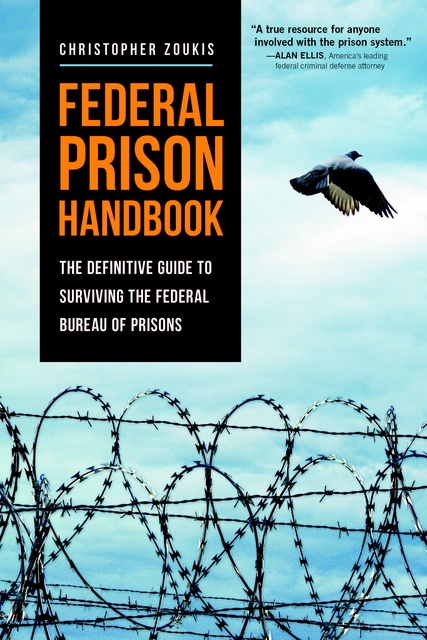Summary of the 2025 Drug Offenses Amendment by the U.S. Sentencing Commission
On April 30, 2025, the United States Sentencing Commission (“USSC”), an independent agency within the judicial branch established under the Sentencing Reform Act of 1984, promulgated a multi-part amendment to the federal sentencing guidelines addressing drug offenses, effective November 1, 2025. This amendment revises guidelines related to drug trafficking, methamphetamine purity distinctions, fentanyl misrepresentation, machinegun involvement in drug crimes, and safety valve eligibility. The changes are intended to enhance sentencing fairness, reflect offender culpability more accurately, and address emerging public safety concerns, particularly the fentanyl crisis. This summary outlines the amendment’s key components, rationale, retroactivity considerations, and anticipated impact on federal sentencing practices.
Background and Context
The federal sentencing guidelines provide a framework for judges to determine sentences for federal offenders, with the USSC responsible for reviewing and refining these policies annually. Drug offenses, particularly those involving fentanyl and methamphetamine, accounted for approximately 24% of federal sentences in fiscal year 2021, according to USSC data. The 2025 drug offenses amendment addresses evolving challenges in drug trafficking, including the rise of fentanyl-related crimes, inconsistencies in sentencing for methamphetamine purity, and the need for clearer criteria for sentencing adjustments. The amendment modifies several sections of the Guidelines Manual, primarily § 2D1.1 (Unlawful Manufacturing, Importing, Exporting, or Trafficking) and § 5C1.2 (Limitation on Applicability of Statutory Minimum Sentences). It was unanimously adopted by the USSC’s five voting members and submitted to Congress on April 30, 2025, for implementation on November 1, 2025, absent congressional disapproval.
Key Components
of the Amendment
The 2025 drug offenses amendment is comprised of five parts, each addressing specific aspects of drug-related sentencing guidelines to promote proportionality and fairness.
Part A: Mitigating Role Provisions and Low-Level Trafficking Functions Reduction
Mitigating Role Reduction: Amends § 2D1.1(a)(5) and provides a new special instruction at Application Note 6(C) of § 3B1.2 (Mitigating Role) to clarify and encourage the application of a mitigating role adjustment for defendants whose “primary function” was a limited or peripheral role in a drug trafficking offense, such as a courier or low-level distributor. This adjustment ensures sentences reflect lower culpability for individuals with less significant involvement in the overall criminal activity.
Low-Level Trafficking Functions Reduction: This amendment, specifically within the context of the mitigating role adjustment, clarifies that offenders whose participation was limited to certain low-level trafficking functions, and who meet other specified criteria (e.g., did not use violence, possess a weapon, or cause death/serious bodily injury), may be eligible for a 2-level reduction in their offense level. This ensures that the guideline range for such offenders is capped at an appropriate level, reflecting their limited culpability despite potentially large drug quantities.
Part B: Methamphetamine
Purity Distinctions
Revises § 2D1.1 to address the purity distinction between “methamphetamine (actual)” and “methamphetamine mixture.” The amendment adjusts penalties to reflect the higher potency and harm of actual methamphetamine, ensuring sentences are proportionate to the drug’s impact on public safety.
Part C: Misrepresenting Fentanyl
or Fentanyl Analogues
Amends § 2D1.1(b)(13) to increase penalties for offenders who misrepresent or market fentanyl or its analogues as legitimately manufactured drugs (e.g., counterfeit pills). Importantly, the amendment lowers the mens rea requirement for applying this enhancement from “willful blindness” to “reckless disregard.” This change broadens the applicability of the enhancement, responding more effectively to the public health crisis of fentanyl overdoses, as misrepresentations increase harm to users unaware of the drug’s true nature and potency.
Part D: Machineguns
in Drug Offenses
Modifies § 2D1.1(b)(1) to clarify the application of enhancements for cases involving machineguns in drug trafficking. The amendment ensures penalties reflect the heightened danger of automatic weapons, addressing inconsistencies in prior guideline applications.
Part E: Safety Valve Eligibility
Amends § 5C1.2(a)(5) to clarify how defendants can satisfy the requirement to provide truthful information to the government for safety valve eligibility, which allows relief from mandatory minimum sentences. The change simplifies the process, enabling more low-level, non-violent offenders to qualify for reduced sentences.
Rationale and
Supporting Evidence
The amendments were driven by extensive stakeholder input, including over 1,200 pages of public comments, judicial feedback, and USSC sentencing data analysis. Key concerns included:
Disproportionate Sentences: Public comments highlighted that low-level drug offenders often faced sentences disproportionate to their roles due to rigid guideline structures. The mitigating role adjustments and trafficking functions reduction address this by tailoring penalties to culpability.
Fentanyl Crisis: The rise in fentanyl-related deaths (over 70,000 overdose deaths in 2021 per CDC data) underscored the need for harsher penalties for misrepresenting fentanyl, as this practice exacerbates public health risks.
Methamphetamine Harm: USSC 2023 reports showing the increasing prevalence of high-purity methamphetamine supported adjustments to reflect its greater harm compared to mixtures.
Judicial Discretion: Judges emphasized the need for clearer safety valve criteria and machinegun enhancement applications to ensure consistent and fair sentencing.
The USSC’s data-driven approach, combined with input from the criminal justice community, aligns these changes with the Sentencing Reform Act’s goals of proportionality, fairness, and public safety.
Retroactivity Considerations
The USSC is actively considering retroactive application for Part A of the 2025 drug offenses amendment, as announced in a Federal Register notice on May 9, 2025, public comments were requested by June 2, 2025. Retroactivity, governed by 28 U.S.C. § 994(u), allows courts to reduce sentences for previously sentenced defendants under 18 U.S.C. § 3582(c)(2) if an amendment lowers the guideline range. The USSC evaluates retroactivity based on the amendment’s purpose, impact on sentencing ranges, and feasibility. § 1B1.10.
Part A (Mitigating Role and Low-Level Trafficking Functions Reduction): Specifically, Subpart 1 (Mitigating Role Provisions at § 2D1.1(a)(5)) and Subpart 2 (Special Instruction Relating to § 3B1.2) of the Drug Offenses Amendment are under explicit consideration for retroactive application. These changes, by clarifying and encouraging mitigating role reductions and providing a new instruction for low-level trafficking functions, could lower offense levels for a significant number of drug offenders, potentially reducing guideline ranges. If designated retroactive, it could benefit thousands of prisoners, especially those convicted of drug trafficking who played minimal roles. The USSC’s 2023 Impact Analysis for Amendment 821 estimated that similar changes affected 18,767 prisoners, suggesting a significant potential impact for these components, given that drug offenses represent 24% of federal sentences, according to USSC fiscal year 2021 data.
Parts B, C, D, and E: The other parts of the drug offenses amendment (Part B: Methamphetamine Purity Distinctions, Part C: Misrepresenting Fentanyl or Fentanyl Analogues, Part D: Machineguns in Drug Offenses, and Part E: Safety Valve Eligibility) are not currently under explicit consideration for retroactive application in the USSC’s May 9, 2025, Federal Register notice. Part B (methamphetamine purity) adjusts penalties but may not consistently lower guideline ranges, as it targets higher-potency drugs. Part C (fentanyl misrepresentation) and Part D (machineguns) generally increase or clarify enhancements that lead to higher penalties, making retroactivity for sentence reductions irrelevant. While Part E (safety valve eligibility) could expand eligibility, it was not included in the formal request for comment on retroactivity at this time
The USSC’s request for comment on Subparts 1 and 2 of Part A indicates a strong possibility of retroactive designation for those specific components, pending analysis of public input and a USSC vote. If made retroactive, these parts could mirror the impact of prior amendments, such as the 2014 drug quantity reductions, which affected over 46,000 prisoners. Courts would apply retroactive changes case-by-case, ensuring consistency with public safety and guideline ranges.
Anticipated Impact
The 2025 drug offenses amendment is expected to have several impacts:
Fairer Sentencing: Parts A and E will reduce sentences for low-level offenders, aligning penalties with culpability and potentially reducing disparities.
Public Safety: Parts B, C, and D address the heightened dangers of high-purity methamphetamine, fentanyl misrepresentation, and machinegun use, ensuring proportionate penalties for serious offenses.
Judicial Efficiency: Clarified guidelines for safety valve eligibility and enhancements will streamline sentencing, reducing disputes and appeals.
Potential Retroactive Relief: If Part A is made retroactive, thousands of current prisoners could seek sentence reductions, reducing prison overcrowding and promoting rehabilitation.
Challenges and Considerations
The amendment’s adoption faced potential challenges due to the USSC’s reduced composition (five voting members instead of seven), requiring at least four affirmative votes. Unanimous adoption mitigated this risk. Implementation will require judicial training to ensure consistent application, particularly for nuanced adjustments like mitigating role reductions. The retroactivity decision, expected post-June 2, 2025, will depend on public comment and data on the number of affected prisoners, with the USSC prioritizing fairness and feasibility.
Conclusion
The 2025 drug offenses amendment represents a significant step toward fairer and more proportionate sentencing for federal drug offenders. By addressing mitigating roles, methamphetamine purity, fentanyl misrepresentation, machinegun enhancements, and safety valve eligibility, the amendment responds to public health crises and judicial feedback while promoting rehabilitation for low-level offenders. Part A is under consideration for retroactive application, potentially benefiting thousands of current prisoners by reducing sentences. Effective November 1, 2025, the amendment reflects the USSC’s commitment to evidence-based policymaking and sentencing reform.
Sources: United States Sentencing Commission, “2025 Drug Offenses Amendment,” United States Sentencing Commission, Federal Register Notice, May 9, 2025, United States Sentencing Commission, “Proposed 2025 Amendments to the Federal Sentencing Guidelines Published January 2025,” United States Sentencing Commission, 2023 Impact Analysis, August 24, 2023.
As a digital subscriber to Criminal Legal News, you can access full text and downloads for this and other premium content.
Already a subscriber? Login





